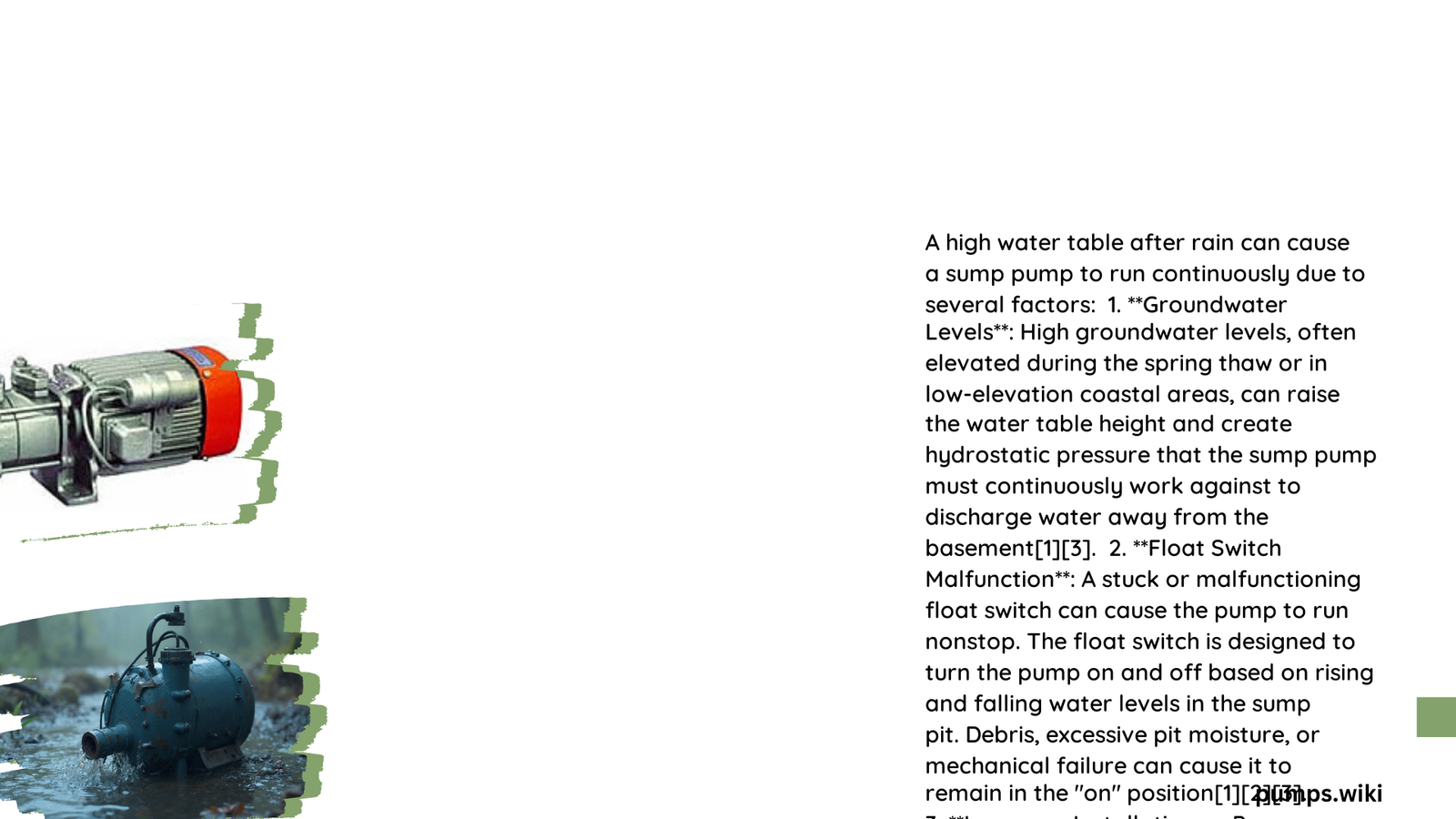When heavy rainfall saturates the ground, homeowners often face a critical challenge: a high water table causing their sump pump to run non-stop. This continuous operation can lead to significant wear on the pump, increased energy consumption, and potential system failure. Understanding the dynamics of water table fluctuations and implementing strategic drainage solutions becomes crucial for protecting your home’s foundation and maintaining an efficient sump pump system.
What Causes High Water Table After Rainfall?
Water tables rise dramatically during intense rainfall periods, creating substantial hydraulic pressure around residential foundations. Several key factors contribute to this phenomenon:
Geological Landscape Influences
- Soil Composition: Clay-heavy soils retain water more efficiently
- Ground Slope: Flat terrain reduces natural water drainage
- Bedrock Proximity: Shallow bedrock limits water absorption
Rainfall Intensity Factors
| Rainfall Intensity | Water Table Impact | Pump Operation Frequency |
|---|---|---|
| Light Rain (0-1 inch/hr) | Minimal Rise | Occasional Cycling |
| Moderate Rain (1-2 inches/hr) | Moderate Rise | Frequent Cycling |
| Heavy Rain (2-4 inches/hr) | Significant Rise | Continuous Operation |
How Does Continuous Pump Operation Affect System Performance?

Continuous sump pump operation presents multiple challenges:
Motor Strain Consequences
- Increased Friction: Constant running generates excessive heat
- Component Degradation: Premature wear on mechanical parts
- Potential Failure: Reduced pump lifespan by 40-60%
Energy Consumption Analysis
A continuously running sump pump can consume:
– 0.5 to 1.5 kWh per operational hour
– Potential daily electricity cost: $1.50 – $4.50
– Annual additional electricity expense: $500 – $1,500
What Drainage Solutions Mitigate High Water Table Issues?
Comprehensive Water Management Strategies
- French Drain Installation
- Redirects groundwater away from foundation
- Average installation cost: $50-$100 per linear foot
-
Reduces hydraulic pressure around home
-
Dry Well Implementation
- Collects and disperses water underground
- Installation expenses: $3,000 – $10,000
- Effective for persistent water table challenges
How Can Homeowners Protect Their Sump Pump?
Maintenance Recommendations
- Monthly Inspections
- Check discharge line for obstructions
- Clean sump pit
-
Verify float switch functionality
-
Quarterly System Assessment
- Test pump cycling mechanism
- Examine check valve performance
- Evaluate discharge pipe integrity
What Professional Solutions Exist?
Expert Intervention Options
- Professional water table assessment
- Advanced drainage system design
- Hydraulic pressure mitigation techniques
- Specialized pump selection consultations
Technical Recommendations for Pump Selection
Optimal Pump Characteristics
- Flow Rate: 30-60 gallons per minute
- Head Pressure: 20-30 feet
- Motor Durability: Designed for frequent cycling
- Energy Efficiency: Low power consumption models
Conclusion
Managing high water tables requires proactive strategies, understanding geological conditions, and implementing targeted drainage solutions. Regular maintenance, professional assessments, and strategic pump selection can significantly mitigate continuous operation challenges.
